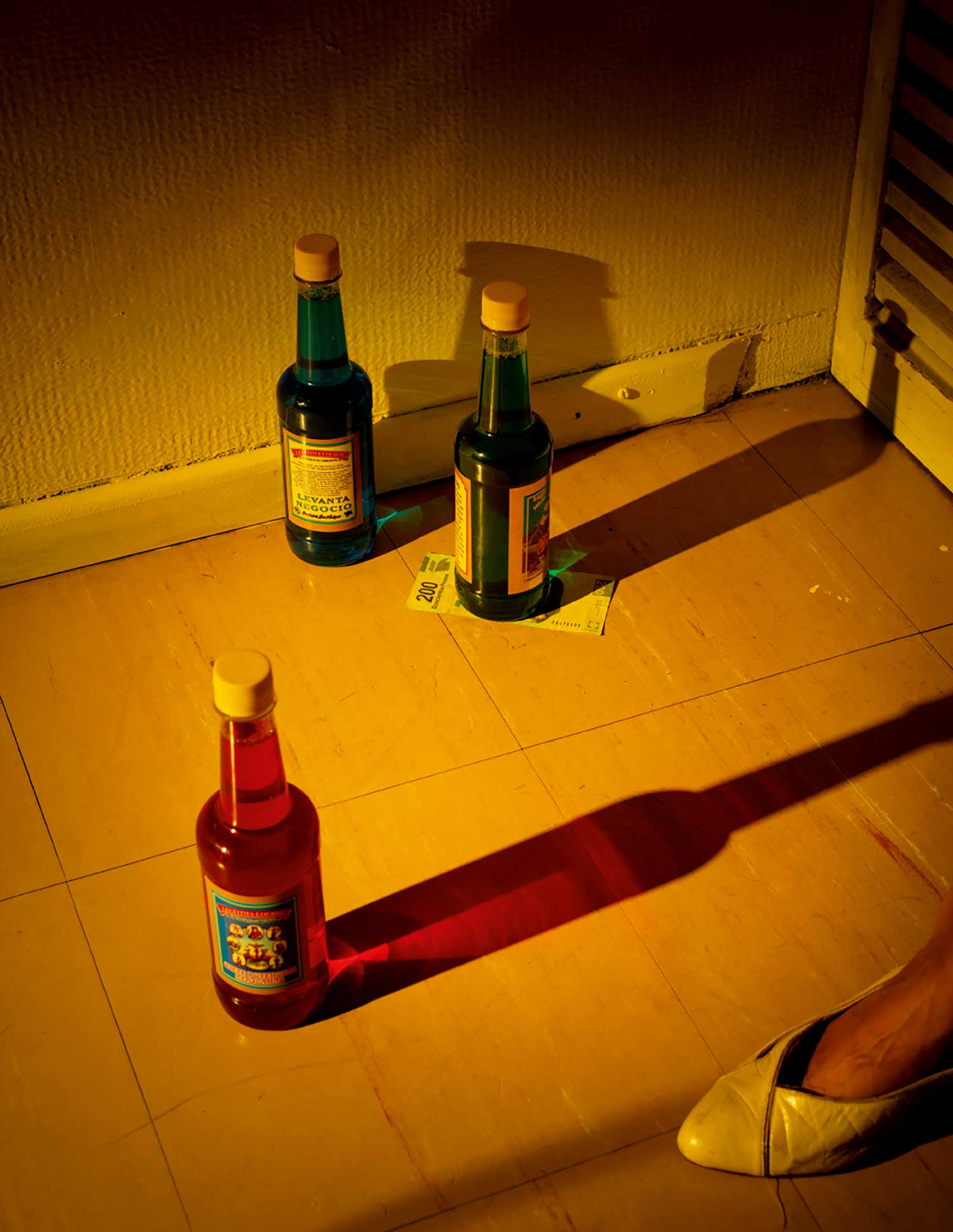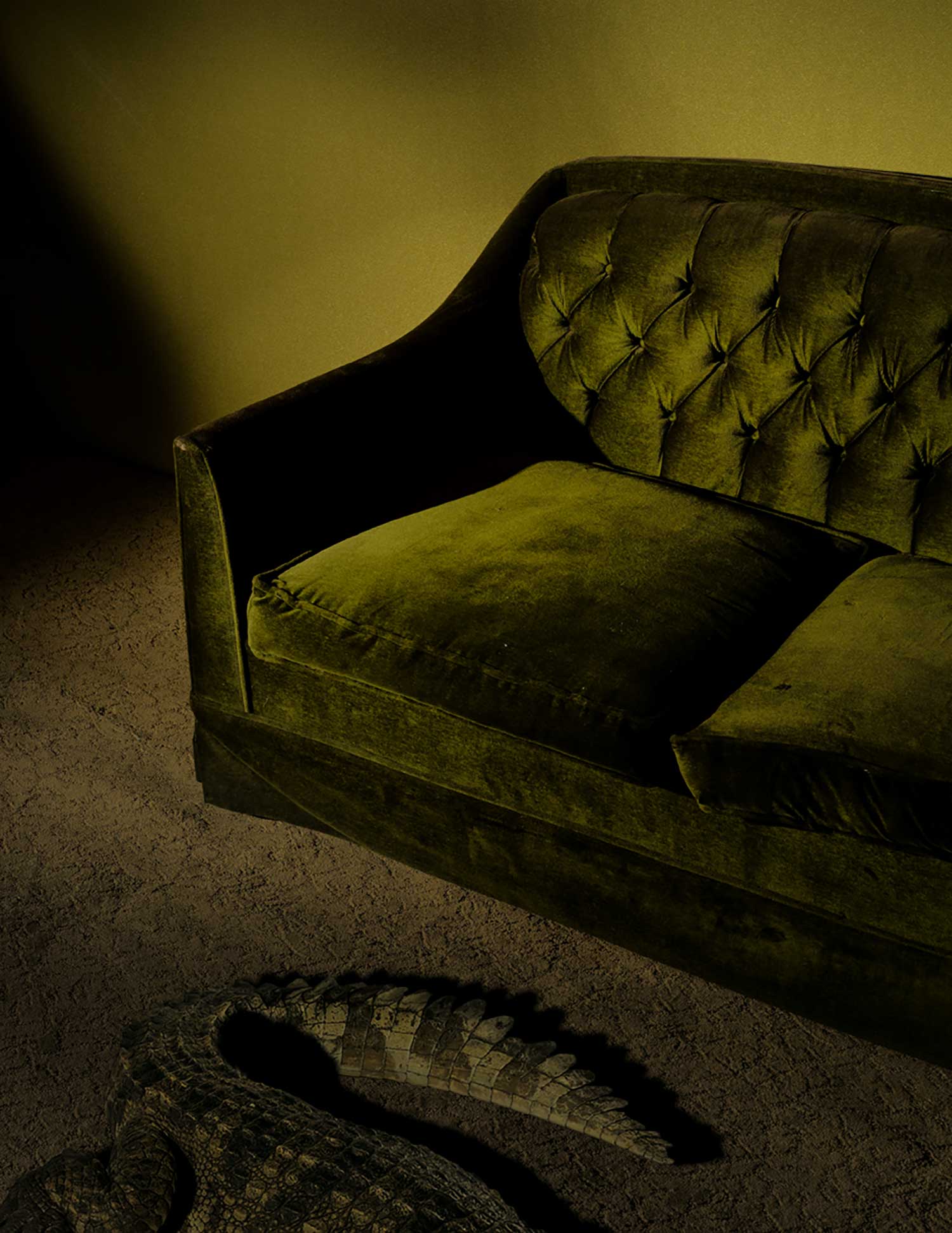Many of Tania Franco Klein’s photographs depict female figures who seem lost in the vastness of an inhospitable landscape or in a moment of contemplation, the edges of the self contained within those of a geometrical interior. Her images are bathed in a warm cinematic light, boudoir red, and suffused with a Lynchian sense of menace—they resemble film stills taken midnarrative, though it’s unclear whether the climactic moment has yet taken place.
For her newest series, Mercado de Sonora (2019), Franco Klein focuses her gaze for the first time, after many photographic projects abroad, on her native Mexico. In the past, she has often donned a wig and turned the camera on herself; in this body of work, her mother and grandmother become the models in an extended form of self-portraiture that captures the ways in which beliefs are passed from generation to generation.
The Mercado de Sonora, a vast traditional market in southeast Mexico City, is a space, Franco Klein explains, where class boundaries dissolve: a cross-section of society, from the house servant to the industrialist’s wife, comes here to find esoteric cures. The politics of the marketplace are evident in its gender distribution: women sell spells, men sell animals. For alongside the stalls of abracadabra and Santa Muerte figurines is a squirming menagerie of trafficked wildlife, a vast array of fauna crammed into cages, heaped on one another, struggling for air and space. Around 70 percent of creatures transported to the market die en route, and those that survive often meet their end in a gruesome Santeria ritual or, in the case of the more exotic species, as pets to narco juniors. For decades, authorities have turned a blind eye toward this lucrative hub of illegal trafficking.


Because of the rampant criminal activity, photography at the market is strictly forbidden. Franco Klein decided to shift the context and bring the spells, the promises being sold, into a more private realm, in order to explore what happens once these products are taken home. In doing so, she has created spaces of longing and atmospheric ambiguity, where every detail is freighted with forensic significance. Over and over, the viewer is invited to imagine the psychodrama unfolding within.
In one disquieting photograph, a hand appears to hold down the shoulder of a woman in a silky dress and black wig, while the other hand runs an egg over her head as part of a limpia, or spiritual cleansing, the negative energy extracted condensing into shadow. Elsewhere, the components of an abandoned magic spell are strewn across a carpeted floor in a palette of dusky reds and greens—a small voodoo doll, a lock of hair, a burnt candle. Nearby, the feet of a woman soak in a green bowl; it’s unclear whether this is part of the ritual. Another photograph shows three perfume bottles, one resting on a two-hundred-peso note, on a linoleum floor; meeting them head-on is the white shoe of a woman. Both images suggest a schism between the magical product and the human subject, an abyss between expectation and fulfillment.


Animals, the most troubling “items” for sale at the Mercado de Sonora, feature in the two darkest photographs. A piglet perches on a table covered by a red cloth; it stares at the camera, accompanied only by its shadow, like a stage prop missing its magician. In the other, a green velvet sofa is juxtaposed with the curled tail of a (presumably dead) crocodile. Torn from their habitats, these animals, decontextualized in the marketplace, appear now even further estranged from nature.
The most hopeful composition—should faith be correlative to levels of brightness—shows a green soap and its box, which bears the words Ven a mi (Come to me), resting on a bathroom shelf alongside a plastic green comb and a bright red dustpan. The playful primary color scheme, set against a blue-tiled wall, evokes an optimism absent from the murky incertitude elsewhere.
Throughout this series of lyrical and unsettling mise-en-scènes, Franco Klein deconstructs the human subject and the magic charm. Female figures—defamiliarized by wigs or disembodied—interact with spells that have also, in some way, become fragmented. In our Mexico, a country beset by violence, poverty, and environmental crisis, these images depict an unshakable belief in enchantment, however tenuous its promise.

